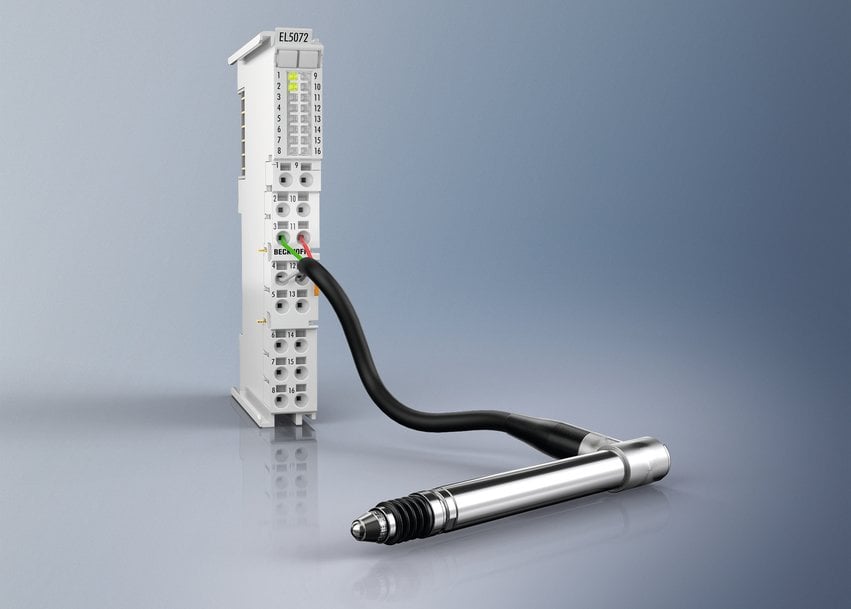www.magazine-industry-usa.com
14
'21
Written on Modified on
EL5072 EtherCAT Terminal enables direct connection of inductive displacement sensors
Integrating compact, precise displacement measurement into standard control technology reduces complexities.

The EL5072 EtherCAT Terminal from Beckhoff enables direct connection of up to two inductive displacement sensors, including transducers in LVDT and half-bridge designs or inductive angular position sensors in the RVDT version. Thus, precise position and distance measurements, e.g., in the context of process control or the control of joining processes, can be solved in a compact, finely scalable and cost-effective way. The EL5072 measures just 12 mm wide for space-saving installation in the standard EtherCAT I/O system.
Displacement measurement is one of the most important metrological tasks, both in the industrial production environment and in infrastructure monitoring. Examples include the measurement and inspection of workpiece geometry, the monitoring of press-fit and joining processes, inline quality assurance and building monitoring. With the EL5072 EtherCAT Terminal, all commercially available inductive measuring probes can be integrated into the standard control platform and evaluated without great effort.
The integrated excitation source of the EL5072 provides a wide range of parameterizable excitation frequencies and voltages. Further special features are the automatically adapted measuring signal range, switchable input impedances for different probe types as well as one digital input per channel for setting and storing the position value (incl. time stamp). The measured value is determined with high precision by a 24-bit A/D conversion and output directly as a 32-bit position value that can be easily integrated into the control program. In addition, the terminal features diagnostics for short circuit and overload of the excitation source as well as amplitude errors of the measuring signal per channel.
www.beckhoff.com

